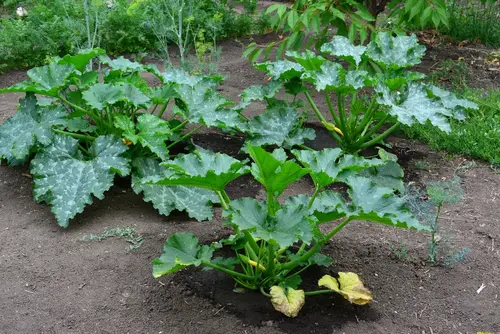Zucchini is a popular summer squash that is easy to grow and harvest in a home garden. However, sometimes zucchini plants can begin to wilt, turn yellow, or die off altogether, leaving gardeners wondering what went wrong.
In this article, we will explore the possible reasons why zucchini plants might be dying and what gardeners can do to prevent and solve these issues.
Understanding zucchini plants dying is crucial to maintaining a healthy and productive garden. Common diseases and pests, such as vine borers, bacterial wilt, and powdery mildew, can quickly take hold of a zucchini plant and cause damage.
Additionally, environmental factors such as temperature, humidity, and soil conditions can also impact the health of a zucchini plant. Nutrient deficiencies, such as a lack of nitrogen or potassium, can also cause zucchini plants to suffer. By understanding these factors, gardeners can take steps to prevent and treat issues with their zucchini plants.
Key Takeaways on Why Are My Zucchini Plants Dying?
- Zucchini plants can die due to a variety of factors, including diseases, pests, environmental factors, and nutrient deficiencies.
- Understanding the health of a zucchini plant is crucial to maintaining a healthy and productive garden.
- By taking preventive measures, such as proper watering, fertilizing, and pest control, gardeners can help ensure the health of their zucchini plants.
Check out these other related posts:
Understanding Zucchini Plant Health
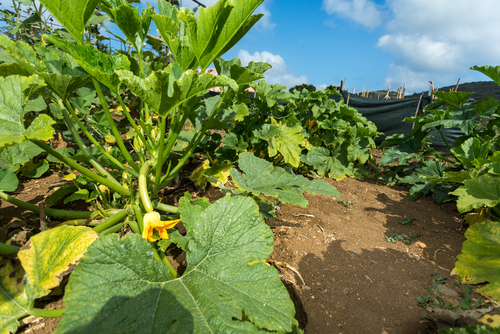
Zucchini plants are a popular and easy-to-grow vegetable in many home gardens. However, they are not immune to problems that can cause them to die. Understanding the basics of zucchini plant health can help gardeners keep their plants healthy and productive.
1. Planting Location
Zucchini plants grow best in full sun, with at least six hours of direct sunlight per day. Planting them in a location with too much shade can cause stunted growth and poor fruit production. Additionally, zucchini plants require well-draining soil, as they are susceptible to root rot if the soil is too wet.
2. Watering
Zucchini plants require consistent watering, as they do not tolerate drought well. However, overwatering can also be a problem, as it can lead to root rot and other fungal diseases. A good rule of thumb is to water deeply once a week, allowing the soil to dry out slightly between waterings.
3. Soil Health
Zucchini plants require nutrient-rich soil to thrive. Adding compost or other organic matter to the soil before planting can help improve soil health and provide the necessary nutrients for healthy plant growth. Additionally, maintaining the proper pH level (between 6.0 and 7.5) can help prevent nutrient deficiencies and other soil-related problems.
4. Pest and Disease Control
Zucchini plants are susceptible to a variety of pests and diseases, which can cause them to die. Common pests include squash bugs, cucumber beetles, and vine borers, while common diseases include powdery mildew and bacterial wilt.
Gardeners can prevent these problems by practicing good garden hygiene, such as removing diseased plant material and using organic pest control methods.
Common Diseases and Pests
Zucchini plants are susceptible to a variety of diseases and pests that can cause them to wilt, wither, or die. Identifying and treating these problems early can help ensure a healthy harvest. Here are some of the most common diseases and pests that affect zucchini plants:
1. Powdery Mildew
Powdery mildew is a fungal disease that appears as a white or gray powdery coating on the leaves, stems, and flowers of zucchini plants. It can cause the leaves to curl, yellow, and die, and can eventually kill the entire plant. Powdery mildew thrives in warm, humid conditions and can spread quickly in crowded gardens.
To prevent powdery mildew, avoid planting zucchini plants too close together and provide adequate air circulation. Water the plants at the base to keep the leaves dry, and remove any infected leaves or plant debris immediately. If powdery mildew persists, spray the plants with a fungicide labeled for use on vegetables.
2. Bacterial Wilt
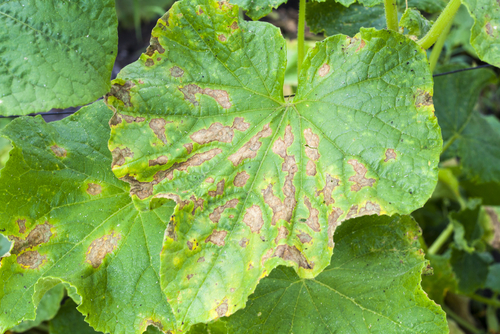
Bacterial wilt is a disease caused by the bacterium Erwinia tracheiphila, which is transmitted to zucchini plants by cucumber beetles. It can cause the leaves to wilt and turn yellow, and can eventually kill the entire plant. Bacterial wilt is most common in warm, humid climates.
To prevent bacterial wilt, control cucumber beetles with insecticides or by using row covers to keep them away from the plants. Remove and destroy any infected plants immediately to prevent the spread of the disease.
3. Squash Bugs
Squash bugs are a common pest that can cause significant damage to zucchini plants. They feed on the leaves, stems, and fruits of the plant, causing wilting, yellowing, and death. Squash bugs are most active in warm weather and can quickly infest an entire garden.
To control squash bugs, handpick them off the plants and destroy them. You can also use insecticides labeled for use on vegetables, or plant companion plants like marigolds or radishes that repel squash bugs.
4. Vine Borers
Vine borers are the larvae of a type of moth that lays its eggs on the stems of zucchini plants. The larvae burrow into the stems and feed on the plant tissue, causing wilting, yellowing, and death. Vine borers are most active in warm weather and can quickly kill an entire plant.
To prevent vine borers, use row covers to keep the moths away from the plants. If you see any signs of infestation, carefully slit open the stem and remove the larvae by hand. You can also use insecticides labeled for use on vegetables to control the moths.
Environmental Factors
Zucchini plants are sensitive to environmental factors, and several factors can cause them to die. Here are some of the most common environmental factors that can cause zucchini plants to die:
Inadequate Sunlight
Zucchini plants need plenty of sunlight to grow and produce fruit. If they don’t get enough sunlight, they may become weak and die. Ideally, zucchini plants should receive at least six hours of direct sunlight per day.
If your plants are not getting enough sunlight, you can try moving them to a sunnier location or trimming nearby trees or bushes to allow more sunlight to reach the plants.
Poor Soil Quality
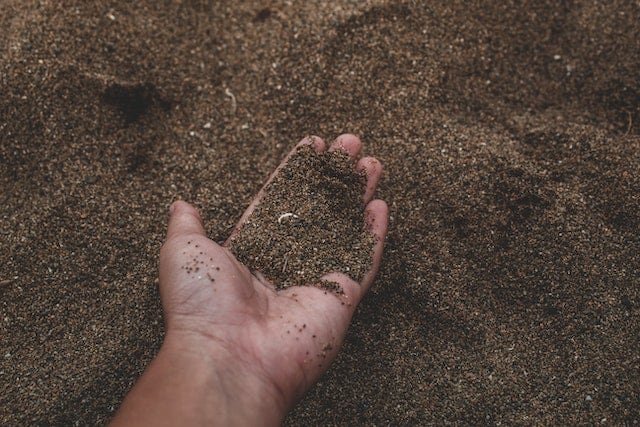
Zucchini plants require well-draining, nutrient-rich soil to grow and thrive. If the soil is too compacted, waterlogged, or nutrient-poor, the plants may become weak and die. You can improve the soil quality by adding compost or organic matter to the soil. This will help to improve drainage and provide the plants with the nutrients they need to grow.
Improper Watering
Zucchini plants require consistent and adequate watering to grow and produce fruit. If they don’t get enough water, they may wilt and die. On the other hand, if they get too much water, the roots may become waterlogged, and the plants may die.
You should water your zucchini plants deeply but infrequently, allowing the soil to dry out slightly between waterings. Additionally, you should avoid watering the leaves of the plant, as this can promote the growth of fungal diseases.
Nutrient Deficiencies
Zucchini plants require a balanced supply of nutrients to grow and produce healthy fruits. A lack of essential nutrients can cause the plant to weaken and become more susceptible to pests and diseases. Here are some of the most common nutrient deficiencies that can affect zucchini plants.
Nitrogen Deficiency
Nitrogen is essential for plant growth and is required for the production of chlorophyll, which is responsible for the green color of leaves. A lack of nitrogen can cause the leaves of the zucchini plant to turn yellow, starting from the bottom of the plant and moving upwards. The leaves may also become smaller, and the plant may produce fewer fruits.
To remedy a nitrogen deficiency, gardeners can add nitrogen-rich fertilizers, such as blood meal or fish emulsion, to the soil. Alternatively, they can plant nitrogen-fixing crops, such as beans or peas, alongside the zucchini plant.
Potassium Deficiency
Potassium is important for the development of strong stems and roots, as well as the production of fruits. A lack of potassium can cause the leaves of the zucchini plant to become scorched or brown around the edges. The plant may also produce fewer fruits, and the fruits may be smaller than normal.
To correct a potassium deficiency, gardeners can add potassium-rich fertilizers, such as wood ash or kelp meal, to the soil. They can also incorporate compost into the soil, which is a natural source of potassium.
Phosphorus Deficiency
Phosphorus is essential for the growth and development of roots and flowers. A lack of phosphorus can cause the leaves of the zucchini plant to turn dark green or purple. The plant may also produce fewer fruits, and the fruits may be small and misshapen.
To address a phosphorus deficiency, gardeners can add phosphorus-rich fertilizers, such as bone meal or rock phosphate, to the soil. They can also add compost to the soil, which is a natural source of phosphorus.
Preventive Measures and Solutions

1. Proper Planting
One of the most important things to consider when planting zucchini is to choose the right location. Zucchini plants require full sun, which means they need at least six hours of direct sunlight per day.
Additionally, they prefer well-draining soil that is rich in organic matter. Before planting, it is recommended to prepare the soil by adding compost or well-rotted manure.
When planting zucchini, it’s important to space the plants properly. Each plant should be spaced about 3-4 feet apart to allow for adequate air circulation and to prevent the spread of disease. Proper spacing also ensures that the plants have enough room to grow and produce a good yield.
2. Pest Control
Zucchini plants are susceptible to a variety of pests, including squash bugs, cucumber beetles, and vine borers. To prevent these pests from damaging your plants, it’s important to take preventive measures.
One effective method is to use row covers to protect the plants from pests. Additionally, handpicking pests off the plants and applying insecticidal soap can help control the infestation.
3. Fertilization and Soil Management
Zucchini plants are heavy feeders and require regular fertilization. Before planting, it’s recommended to add a balanced fertilizer to the soil. After planting, it’s important to continue fertilizing the plants every few weeks throughout the growing season.
It’s also important to regularly check the soil moisture levels and water the plants as needed. Overwatering can lead to root rot, while underwatering can cause the plants to wilt and die.
4. Water Management
Proper water management is crucial for the health of zucchini plants. The plants require regular watering to keep the soil moist, but not waterlogged. One effective method is to use a drip irrigation system, which delivers water directly to the roots of the plants. This helps prevent overwatering and ensures that the plants receive the right amount of moisture.
Frequently Asked Questions
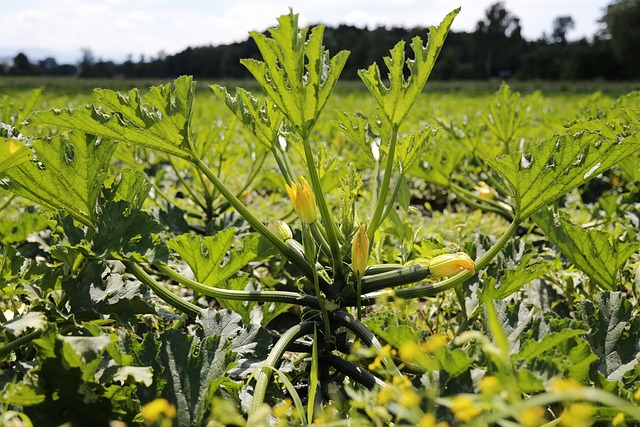
What are the signs of overwatering zucchini plants?
Overwatering zucchini plants can cause the leaves to turn yellow, and the plant may become droopy or wilted. The soil may also become waterlogged, which can lead to root rot. If the plant is overwatered for an extended period, the leaves may start to develop brown spots or become slimy.
How can I prevent my zucchini plant from wilting in the sun?
Zucchini plants require a lot of water, especially during hot and dry weather. To prevent wilting, make sure the soil is kept moist but not waterlogged.
Adding a layer of mulch around the base of the plant can help to retain moisture in the soil. It’s also a good idea to water the plant early in the morning or late in the evening when the sun is not as strong.
What causes zucchini plants to turn yellow and wilt?
Zucchini plants may turn yellow and wilt due to a lack of water or nutrients, pests, or disease. If the plant is not receiving enough water, the leaves will start to turn yellow and dry out. If the plant is infected with a disease such as bacterial wilt or mosaic virus, the leaves may also turn yellow and wilt.
What is the treatment for zucchini bacterial wilt?
Unfortunately, there is no cure for bacterial wilt once a plant is infected. The best course of action is to remove the infected plant and dispose of it properly. To prevent the spread of the disease, avoid planting zucchini in the same location for at least three years.
How can I revive a wilted zucchini plant?
If a zucchini plant is wilted due to a lack of water, it can usually be revived by watering it thoroughly and adding mulch around the base of the plant to retain moisture. If the plant is wilted due to a disease or pest infestation, it may not be possible to revive it.
What are the common reasons for zucchini plants to shrivel up and die?
Zucchini plants may shrivel up and die due to a lack of water, pests, or disease. If the plant is not receiving enough water, the leaves will start to dry out and eventually the entire plant may die.
If the plant is infected with a disease such as powdery mildew or downy mildew, the leaves may also start to shrivel up and die. Pests such as squash bugs or vine borers can also cause the plant to die.

Hey, I’m Lisa and I’ve been an avid gardener for over 30 years. I love writing, talking and living in the garden! Feel free to connect with me on my socials below

